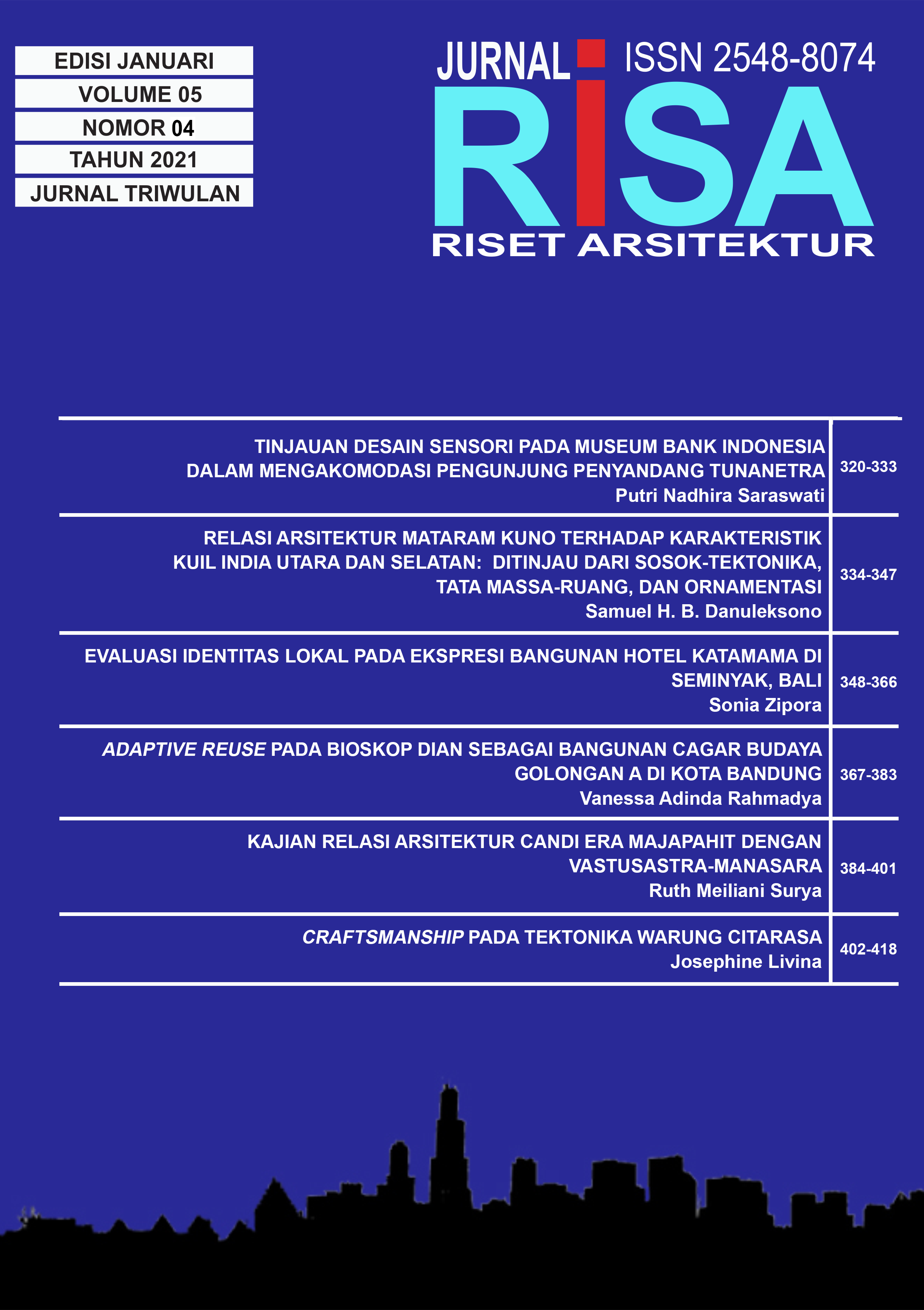RELATION OF ANCIENT MATARAM TEMPLE BASED ON NORTH INDIA AND SOUTH INDIA’S CHARACTERISTICS: FROM THE FIGURE-TECTONICS, MASS-SPACE STUDY, AND ORNAMENTATION
DOI:
https://doi.org/10.26593/risa.v5i04.5298.334-347Abstract
Abstract- Hinduism is a religion that was born in India and has developed rapidly into the archipelago with evidence of Sanskrit inscriptions and Pallava. The religion had a significant influence on Java which changed the political, economic, social and cultural life which at that time was still a kingdom. The arrival of Indians to Indonesia affected by the reverse flow between Indonesia and India and India and Indonesia. This can be seen by the presence of Indonesian dormitories in Nalanda (North India) and Nagapattinam (South India). The influence of North and South India can be seen from the existence of Hindu-Buddhist temples in the Archipelago which was built in one of the Hindu kingdoms, namely the Kingdom of Ancient Mataram which had areas of authority from Central Java to East Java. The temples that were built are thought to have an identity with temples in North and South India in terms of figure, inner space tectonics, mass layout, spatial planning, and ornamentation. This identity is thought to be a close relationship between North India and South India with Indonesia, especially in the era of Ancient Mataram.
The purpose of this study is to find out the relationship or relationship of Ancient Mataram era temple architecture to North and South Indian temple architecture. The analysis method used is the comparative – qualitative method. Work plans, plans, pieces, site plans, and block plans of 28 Hindu-Buddha tower types in Central Java will be compared in terms of similarities and differences and then analyzed regarding the position of the laying, and elements of the temple so that the relationship between the two countries is found. Data obtained from literature studies and field surveys. The conclusion drawn from this study is that there is a closer relationship with South India than North India. The influence of North India and South India is only limited to the external appearance in the study of figure and ornamentation, while in the study of mass and spatial planning and inner space tectonics is more developed by the people of Ancient Mataram which is adjusted to traditional values and natural influences.
Key Words: figure, tectonics, mass layout, spatial planning, ornamentation, North and South India, Ancient Mataram
Downloads
Published
Issue
Section
License
Copyright (c) 2021 Samuel H. B. Danuleksono

This work is licensed under a Creative Commons Attribution-NonCommercial-ShareAlike 4.0 International License.












